Reciprocating compressors
Due to their simple structure and low operating costs, reciprocating compressors have been used for many years where there is no need for compressed air continuously. It would be best if it was 50:50 (work - rest) in the shortest possible cycles.
These can be small industrial plants, service workshops, car or tire services, or, for example, gas stations. Often, reciprocating compressors are also used by DIY enthusiasts.
The greatest advantage of this type of compressors is mobility, durability, price and low operating costs.
It should also be taken into account that due to the principle of operation of a reciprocating compressor, a natural pulsation of pressure and flow rate occurs in a pneumatic system.
The high noise level of this type of compressors is also important. In order to reduce the noise level, there are also versions with a soundproofing housing.
Due to the type of lubrication, compressors are divided into oil (the most common) and oil-free.
Oil-free compressors
Instead of oil lubricating the crank-piston system, these compressors have piston sealing rings made of PTFE - i.e. Teflon, which does not require additional lubrication. Therefore, we get air free from oil particles - which is their unquestionable advantage.
Oil-free compressors are used where particularly high air quality is required, such as the food industry, pharmaceutical industry or medical applications, e.g. in dental units or in the water treatment process.
Our offer includes reciprocating compressors from manufacturers such as Atlas Copco, the German company BOGE and Italian compressors owned by our brand - Pneumatig.
The basic group of Atlas Copco oil-free compressors is the AH Automan series with max.
operating pressure of 8 bar. On the other hand, professional applications include the LFx and LF series with max. pressure of 10 bar.
As for the second manufacturer, BOGE is the ASO / BSO and K series, which are considered to be the most durable oil-free piston compressors available on the market.
Atlas Copco Automan AH
- small sizes
- almost maintenance-free
- handy
- permanently
- light
- side transport possible
- max pressure 8 bar
Atlas Copco LFX
- very quiet 62 dB
- high reliability
- air clean from oil acc. ISO 8573-1 standards
- high efficiency
- max. pressure 10 bar
Atlas Copco LF
- easy service
- air clean from oil acc. ISO 8573-1 standards
- low cost of operation
- high reliability
- max. pressure 10 bar
Oil compressors
The reciprocating compressor is used wherever air consumption is less than approx. 800 l / min and it is possible to allow the compressor to run intermittently.
It is not without significance that such a compressor generates quite bothersome noise, and not everywhere can be afforded it, which is why we offer optionally soundproofed versions (soundproof housing - for some models).
Due to the structure of the compression stage (compressor pump), it can be divided into:
- one piston
- 2-piston compressor
- two-piston with two compression stages
- 3 piston compressors
However, due to the type of drive transmission, we can divide it into a direct drive, where the motor is integrated directly with the pump, or with a belt drive.
Integrated (direct) drive is available in single-piston or 2-piston compressors, such as Atlas Copco LE, LT series. They are slow-speed compressors, which translates into longer durability of these devices.
Single piston compressors are usually small oil compressors with a 6, 9, 24, 50 l tank, with a supply voltage of 230V / 1Ph / 50HZ
On the other hand, two-piston compressors are available with a tank from 24 l (compressors in a V system) through 50, 100, 150, 200, 270, 1000 l, with a supply voltage of 230V / 1Ph / 50Hz (with lower engine power) and 400V / 50Hz / 3Ph (the vast majority).
Single piston compressors can generate a pressure of max. 8 or 10 bar (AF Atlas Copco series), while two piston 10, 15 or even 30 bar in the case of Atlas Copco compressors of the LT series or BOGE compressors.
A separate group of high-pressure reciprocating compressors are compressors for the starting of axial engines, they are equipped and manufactured differently from the basic versions, and have DNV or Lloyds Register approvals.
The power range of the most commonly used motors is from 1.1 kW to 7.5 kW and even 15 kW.
Atlas Copco AF
- compact dimensions
- light
- durable
- efficient, even up to 330 l / min
- max. pressure 8 or 10 bar
Atlas Copco AC
- belt drive
- to work in difficult conditions
- efficient, up to 1000 l / min
- optional up to 15 bar
- available on a 270 l vertical tank
- in a version with a soundproofing housing
Atlas Copco LT
- exceptional durability
- the highest quality of components and workmanship
- compact size
- pressure max. up to 30 bar (option)
- mounted on the frame or on the tank
- two-stage compression
- Optionally with refrigerant dryer
- supplies air with a low oil content
Atlas Copco LE
- single-stage compression
- pressure max. 10 bar
- economical operation
- exceptional durability
- supplies air with a low oil content
- the highest quality of components and workmanship
- optionally with refrigerant dryer
PNEUMATIG
- high durability
- solid construction
- on tanks 24.50,100,150,200,270,500 l
- from 1.5 kW to 7.5 kW
- made in the EU (Italy)
Compressors with an internal combustion engine
Our offer is supplemented by Atlas Copco AC Automan compressors with an internal combustion engine.
- the internal combustion engine is available in two versions: petrol or diesel
- available tanks in the following capacities: 2x11,2x25,50,100,200,270 l
- comfortable handle and / or protective cage (selected models)
- some models are equipped with a power generator as an independent source of electricity
- low-speed compressor element with aftercooler for effective separation of moisture, and in larger models with a dry car-type air filter

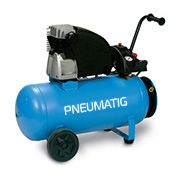
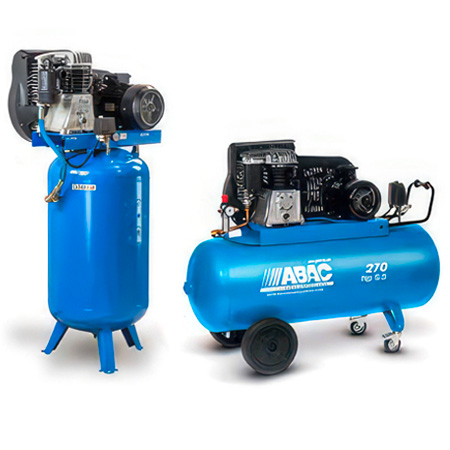
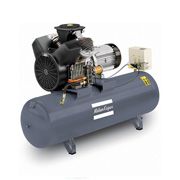
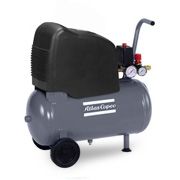
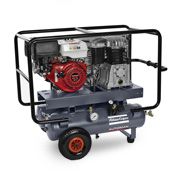
Login and Registration Form